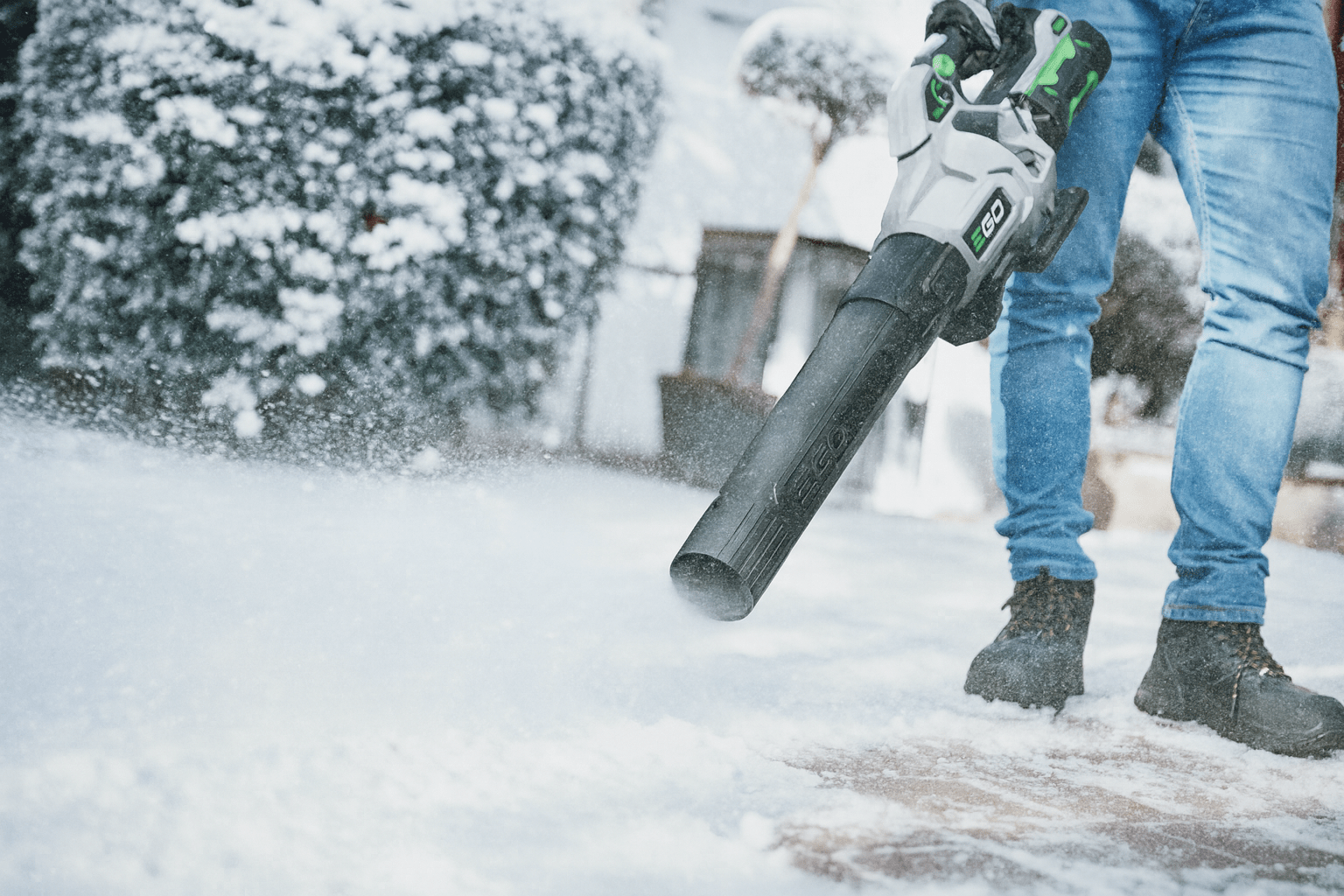Snow doesn’t have to mean shovels and sore backs. If you’ve got a powerful leaf blower, you might be surprised at how well it handles fresh, powdery snow. For quick clears on paths, steps or cars, it can be faster and easier than the old-fashioned approach.
That doesn’t mean it’s the answer for every snowfall. Heavy, wet layers are another matter, and pushing your blower too far can cause more hassle than help. In this guide, we’ll look at when a leaf blower works for snow removal, when it doesn’t, and the best way to use your EGO leaf blower through winter.
When a leaf blower works for snow
A leaf blower comes into its own with light, powdery snow. A couple of inches on the driveway, patio or car can be cleared in minutes, often faster than you’d manage with a shovel. Because snow is lighter than wet leaves, the blast of air from a cordless leaf blower has no trouble shifting it.
Timing makes all the difference. Fresh snow shifts with ease, but once it’s compacted or iced over, even the most powerful blower will struggle. Use it straight away and you’ll save yourself both time and sore muscles..
Pro tip: The EGO LB7650E is a fantastic leaf blower for clearing snow. Its strong airflow makes short work of powder on driveways, paths and cars, while staying easy to handle for everyday winter use.
When not to use a leaf blower for snow
Leaf blowers aren’t built for every kind of snowfall. Heavy, wet snow quickly clumps together, and even the most powerful blower will struggle to shift it.
The same goes for deep layers that have built up over time or snow that’s been walked on and compacted. In these cases, you’ll spend more energy fighting the blower than you would with a shovel.
It’s also worth being cautious in slushy conditions. Blowers are designed for air, not water, and blasting slush can clog the nozzle and leave a mess behind.
Pro tip: For heavier snowfalls, reach for a snow thrower or the snow-clearing multi-tool attachment instead. They’re designed to handle thick, wet layers and make clearing paths and driveways much quicker when the weather really sets in.
Tips for clearing snow with a leaf blower
If you’re planning to use your blower in winter, a few small habits will make it far more effective.
- Clear snow as soon as it falls. Fresh, powdery snow shifts easily, while compacted layers take more effort.
- Use the highest power setting. Strong airflow clears snow quickly and prevents it from settling back.
- Work with the wind. Blow in the same direction so snow moves away instead of swirling back at you.
- Keep batteries warm. Cold weather drains them faster, so store batteries indoors until you’re ready to use them.
- Check the nozzle. Make sure it stays clear for a strong, consistent flow of air.
Pro tip: EGO’s range of cordless blowers are designed to perform year-round, but you’ll get the best results on snow by starting early and keeping your batteries charged and warm. EGO’s LB6150E leaf blower is powerful enough to move fresh powder while light enough for everyday winter use.
The bottom line on using a leaf blower for snow
A leaf blower can be an effective way to clear snow, but only if the conditions are right. Light, dry layers up to a few inches deep can be shifted in minutes, keeping cars, paths and driveways clear without the effort of shovelling.
Once snow turns wet, heavy or compacted, a blower won’t save you time. That’s when a sturdy shovel or a dedicated snow blower will do the job better. Used at the right moment, an EGO blower makes winter mornings quicker, easier and a lot less of a chore.
